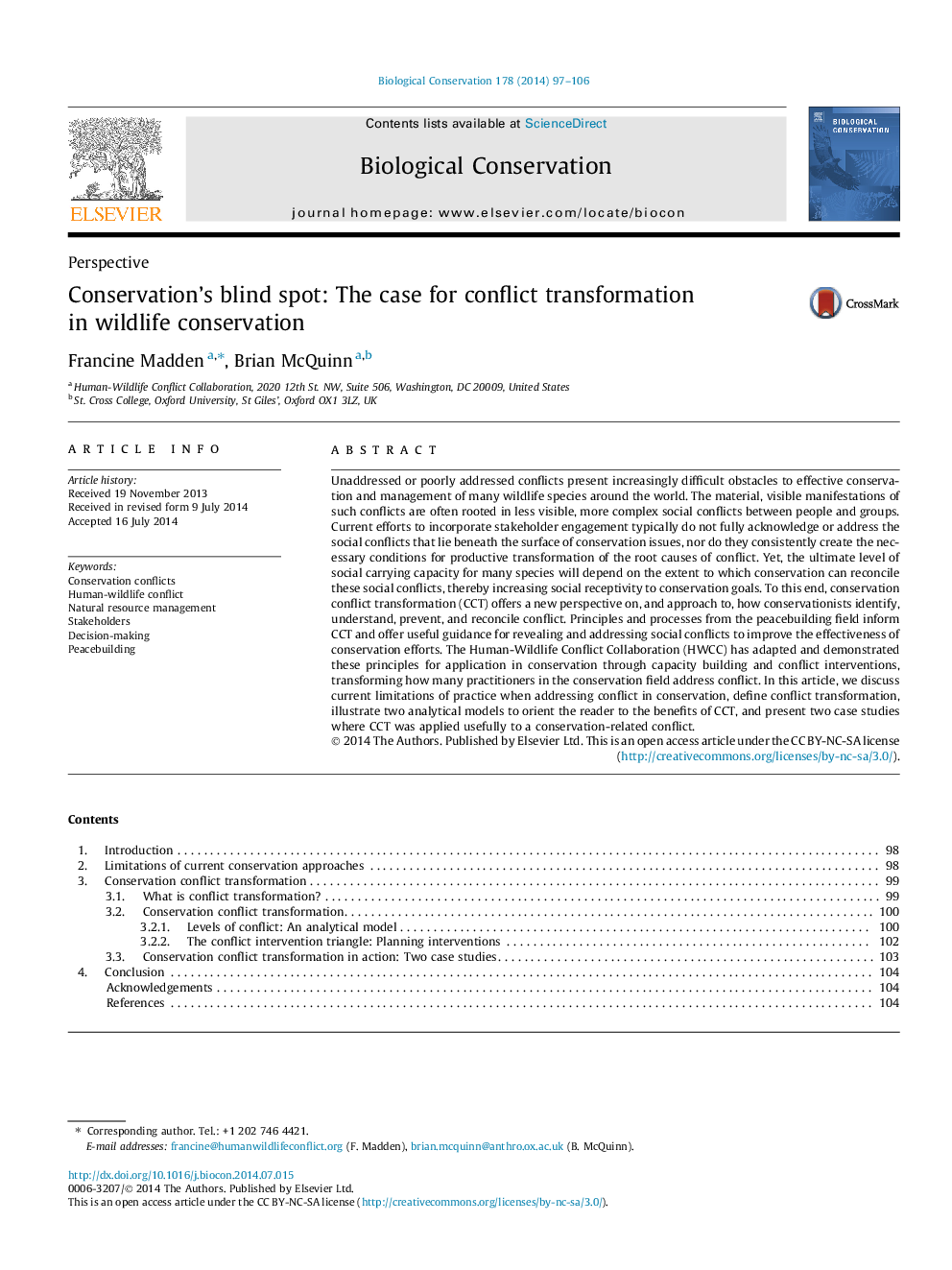| کد مقاله | کد نشریه | سال انتشار | مقاله انگلیسی | نسخه تمام متن |
|---|---|---|---|---|
| 6299494 | 1617923 | 2014 | 10 صفحه PDF | دانلود رایگان |
عنوان انگلیسی مقاله ISI
Conservation's blind spot: The case for conflict transformation in wildlife conservation
ترجمه فارسی عنوان
نقطه کوری حفاظت: مورد برای تحولات درگیری در حفاظت از حیات وحش
دانلود مقاله + سفارش ترجمه
دانلود مقاله ISI انگلیسی
رایگان برای ایرانیان
کلمات کلیدی
درگیری های حفاظتی، مناقشات انسان و حیات وحش، مدیریت منابع طبیعی، سهامداران، تصمیم سازی، صلح ساختن،
موضوعات مرتبط
علوم زیستی و بیوفناوری
علوم کشاورزی و بیولوژیک
بوم شناسی، تکامل، رفتار و سامانه شناسی
چکیده انگلیسی
Unaddressed or poorly addressed conflicts present increasingly difficult obstacles to effective conservation and management of many wildlife species around the world. The material, visible manifestations of such conflicts are often rooted in less visible, more complex social conflicts between people and groups. Current efforts to incorporate stakeholder engagement typically do not fully acknowledge or address the social conflicts that lie beneath the surface of conservation issues, nor do they consistently create the necessary conditions for productive transformation of the root causes of conflict. Yet, the ultimate level of social carrying capacity for many species will depend on the extent to which conservation can reconcile these social conflicts, thereby increasing social receptivity to conservation goals. To this end, conservation conflict transformation (CCT) offers a new perspective on, and approach to, how conservationists identify, understand, prevent, and reconcile conflict. Principles and processes from the peacebuilding field inform CCT and offer useful guidance for revealing and addressing social conflicts to improve the effectiveness of conservation efforts. The Human-Wildlife Conflict Collaboration (HWCC) has adapted and demonstrated these principles for application in conservation through capacity building and conflict interventions, transforming how many practitioners in the conservation field address conflict. In this article, we discuss current limitations of practice when addressing conflict in conservation, define conflict transformation, illustrate two analytical models to orient the reader to the benefits of CCT, and present two case studies where CCT was applied usefully to a conservation-related conflict.
ناشر
Database: Elsevier - ScienceDirect (ساینس دایرکت)
Journal: Biological Conservation - Volume 178, October 2014, Pages 97-106
Journal: Biological Conservation - Volume 178, October 2014, Pages 97-106
نویسندگان
Francine Madden, Brian McQuinn,
